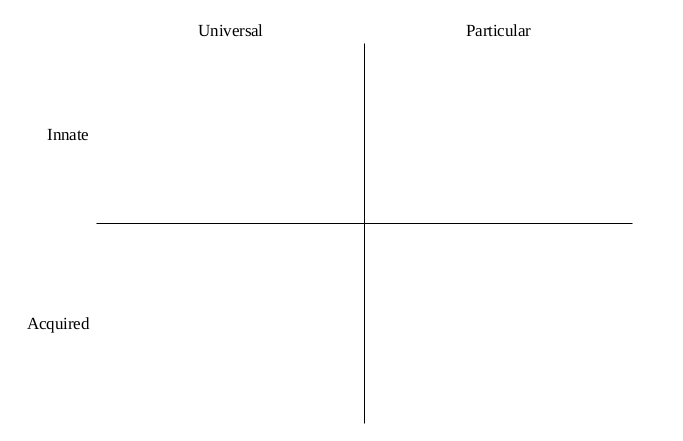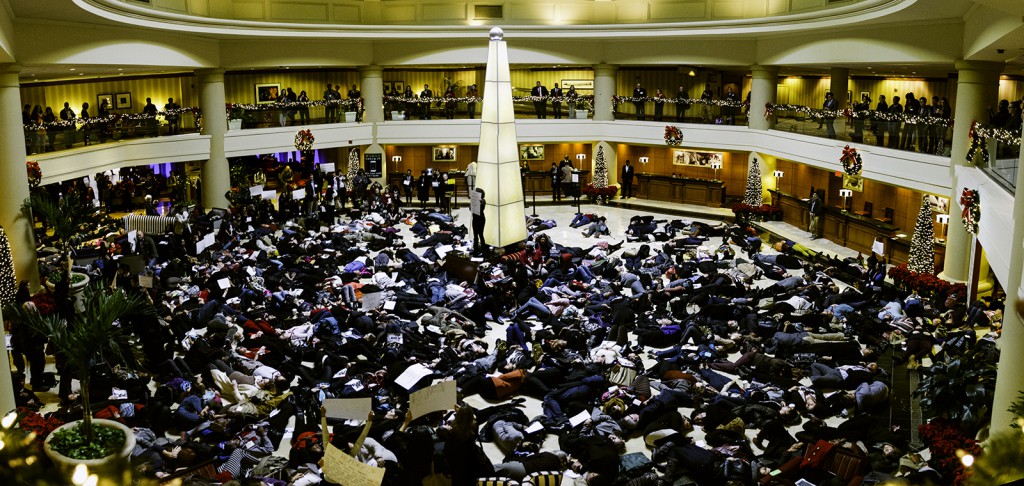Table of Contents
Anthropology, race and culture
Anthropology, race and culture
Ryan Schram
Social Justice Panel Discussion
Wingara Mura Bunga Barrabugu Summer Program
University of Sydney
12 January 2015
Available online at http://anthro.rschram.org/talks/sydney/
What makes us human?
- What does 'human' mean?
- What is the difference between people and other animals?
- What do all human beings have in common?
Some possible answers
- Need to eat, drink, breathe.
- Eyes, nose, mouth, two legs, two arms, and so on.
Why are people different?
Around the world, people can be quite different. People within one society can be pretty different from each other too.
What are some of the ways in which people differ or vary?
Why do people differ in these ways?
I made a graph! I make a lot of graphs...
Before anthropology
In the late 19th century, people were very interested in why humans were different, and they generally believed that most of the differences had something to do with innate, inherited characteristics.
Others argued that the climate and environment imposed limits upon the people living there, giving them these innate features.
The differences between people were natural and could not be changed.
Scientific racism
Back in this time, people used race as a theory of why people were different. Specifically, they believed:
- All people belonged to one of several races.
- Each race was different physically.
- One's race determined how one thought and acted.
- Some races were better or more “civilized” than others.
We can call this way of thinking “scientific racism.” People believed that racism was a scientific, natural fact.
Franz Boas, founder of anthropology
Race does not exist
Boas argued that racial differences were actually not all that big. Mostly people were alike.
More to the point, he said nature is not destiny. It is the things people acquired from their surroundings and their upbringing that made them into who they are. One's community teaches one how to behave, changing one's body and health.
Immigrants in the United States
Immigrants from Eastern Europe to the United States often were very short compared to Americans, leading people to think that they were racially different.
Children of these immigrants tended to grow to be much taller than their parents, and were pretty close to the average height for people their age.
Washington, DC, December 5, 2014
Why would a bunch of anthropologists choose to lay down in the middle of their national convention to protest police racism (McGranahan 2014)?
The concept of culture
People are not more cultured or more cultivated than other people. Everyone acquires the distinct patterns of behavior and thinking from their upbringing.
A lot of a person's way of life is acquired or learned. It's not innate.
A person's behavior is always relative to their culture. That means that when a person learns a particular pattern of behavior, they also learn why it makes sense. It is normal to them and all the people around them, even though it seems strange to people from other places.
What makes us human? Culture.
Every culture is different. But people need culture.
Any person can learn any culture.
Do cultures have anything in common? Is there anything that is both acquired and universal?
References
Anonymous. ca. 1895. Hamats’a Coming out of a Secret Room. Photograph. United States National Museum Report, Plate 29. https://flic.kr/p/5zfdHK.
Eriksen, Thomas Hylland. 2001. Small Places, Large Issues: An Introduction to Social and Cultural Anthropology, 2nd ed. London: Pluto Press.
McGranahan, Carole. 2014. “#BlackLivesMatter and #AAA2014: Die-In, Section Assembly Motion, and the ABA Statement Against Police Violence and Anti-Black Practices.” Savage Minds, December 9. Accessed January 11, 2015. http://savageminds.org/2014/12/09/blacklivesmatter-and-aaa2014-die-in-section-assembly-motion-and-the-aba-statement-against-police-violence-and-anti-black-practices/.
Further reading
Pierpont, Claudia Roth. 2004. “The Measure of America.” The New Yorker 8: 48–63. http://www.globalchange.umich.edu/globalchange2/current/Additional%20Course%20Readings/annals_of_culture.pdf
Similar pages
- Franz Boas and the culture concept (23.36%)
- The universal and the particular (18.28%)
- Difference (17.79%)
- differences (18.66)
- acquired (17.84)
- different (10.78)
- height (9.91)
- normal (8.92)
- The origins of cultural anthropology (17.28%)
- culture (14.31)
- differences (14)
- racism (11.1)
- acquired (10.7)
- yorker (10.48)
- Welcome to anthropology (12.32%)
- sydney (26.13)
- anthropologists (16.08)
- places (13.09)
- eriksen (11.63)
- universal (11.03)
- Week 5 tutorial (12.02%)



